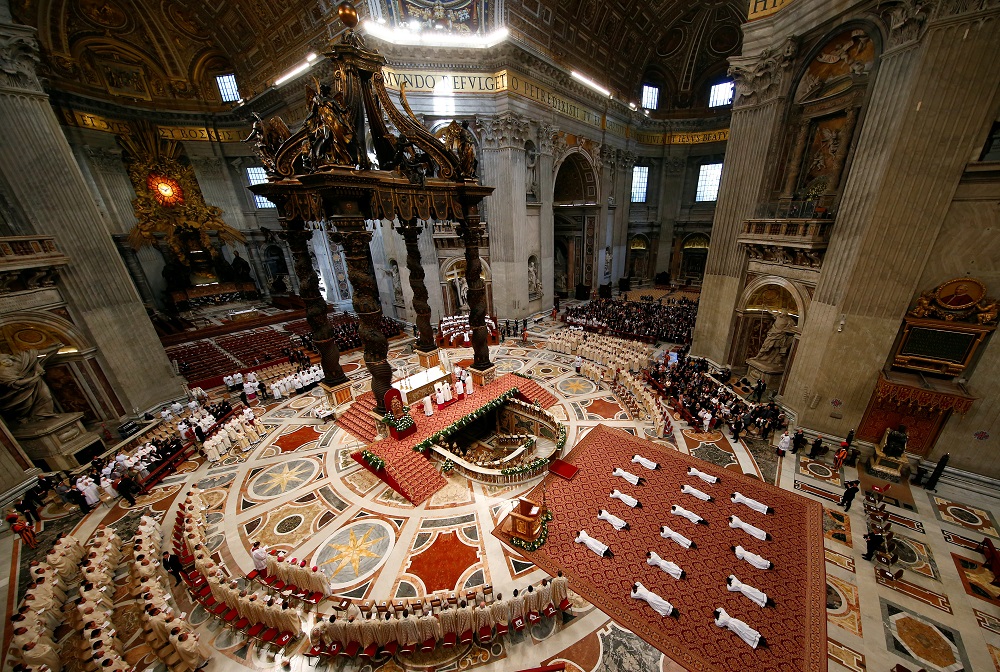The news stories are so commonplace in recent years I could write one in my sleep if asked…
An elderly lady, perhaps a former nun, is going to be “ordained” a “Catholic priest,” citing her lifelong desire while denouncing the prejudice and bigotry of “the Vatican” for saying women cannot, in fact, be ordained priests. The details vary, the essential appeals to sentiment, modernity and equality do not. Explaining the Church’s teaching about priestly ordination is difficult because supporters of women’s ordination begin with premises different from those of the Church and often in direct opposition to them. Yet those assumptions are also widespread in the dominant culture.
The Church insists she must follow the example given by Jesus Christ, who specifically selected 12 men to be His apostles. That decision was not arbitrary, nor was it directed by cultural norms or societal pressures. While women were not allowed to be priests within the Jewish religion, it was also the case that Jesus’ approach to women taking part in His ministry was unusual. Yet He chose men only to be apostles, and those apostles then chose men to be bishops and priests. Thus apostolic succession has followed the same criteria for 2,000 years.
There is an essential matter of humility and obedience for Catholics when it comes to women’s ordination. The prevalent belief among those who push for such ordination is, when push comes to shove, that the authority of Christ and His Church should submit itself to the authority of current notions about women’s rights and equality between the sexes. Some liken the Church’s supposed “sexism” to racism. Yet Christ never founded a doctrine on race or ethnicity; more importantly, the underlying assumption is that the Incarnate Word, the Second Person of the Trinity, somehow made a mistake — that is, He was not, in fact, expressing divine wisdom. The issue, in sum, is very much one of faith.
In addition, the ordained priesthood is viewed by many as a profession, or a position of temporal power. They fail to recognize, as Orthodox theologian and bishop Kallistos Ware has insightfully observed, these three intertwined truths: just One is one priest; all are priests; and only some are priests. In other words, Jesus alone is the high priest of the New Covenant. All those who are baptized form a “royal priesthood” (1 Pt 2:9) and share in a “common priesthood” (see Catechism of the Catholic Church, Nos. 1141-1143, 1546-1547). And the ordained, or ministerial, priesthood is at the service of the common priesthood of the faithful, and is conferred on certain men who receive the Sacrament of Holy Orders.
While the common priesthood is a real sharing in the work of Christ, especially through growth in holiness, the ministerial priesthood partakes in the work of Christ in a unique way, and only a priest, who acts in persona Christi (“in the person of Christ”), is able to celebrate Mass, consecrate the Eucharist and hear confessions. He is a “sign,” or “icon,” of Christ, and “his priesthood exists solely,” as Bishop Ware states, “in order to make Christ present.” Such a sacred sign must be readily understood and perceptible; a female priest would cause confusion and make light of the fact that Christ was, is and always will be a man.
Finally, the Church believes — contrary to faddish trends — that men and women are truly different and complimentary. There is a covenantal, nuptial reality built into creation, reflected in God’s covenants with humanity. In the Old Testament, God is described as a husband married to His chosen people. In Ephesians, Christ is described as the groom and the Church as His bride (see 5:21-32). The entire Church is feminine in character, responsive to her head and groom. The 1976 document Inter Insigniores (from the Vatican’s Congregation for the Doctrine of the Faith) pointed out that no one — including a man — has a “right” to the priesthood; the priesthood “stems from the economy of the mystery of Christ and the Church.” The priesthood is not a pawn in social experiments or political conflicts. Besides, that document emphasized, the “greatest in the kingdom of heaven are not the ministers but the saints.”
Carl E. Olson is the editor of Ignatius Insight (www.ignatiusinsight.com). He and his family live in Eugene, Ore.

